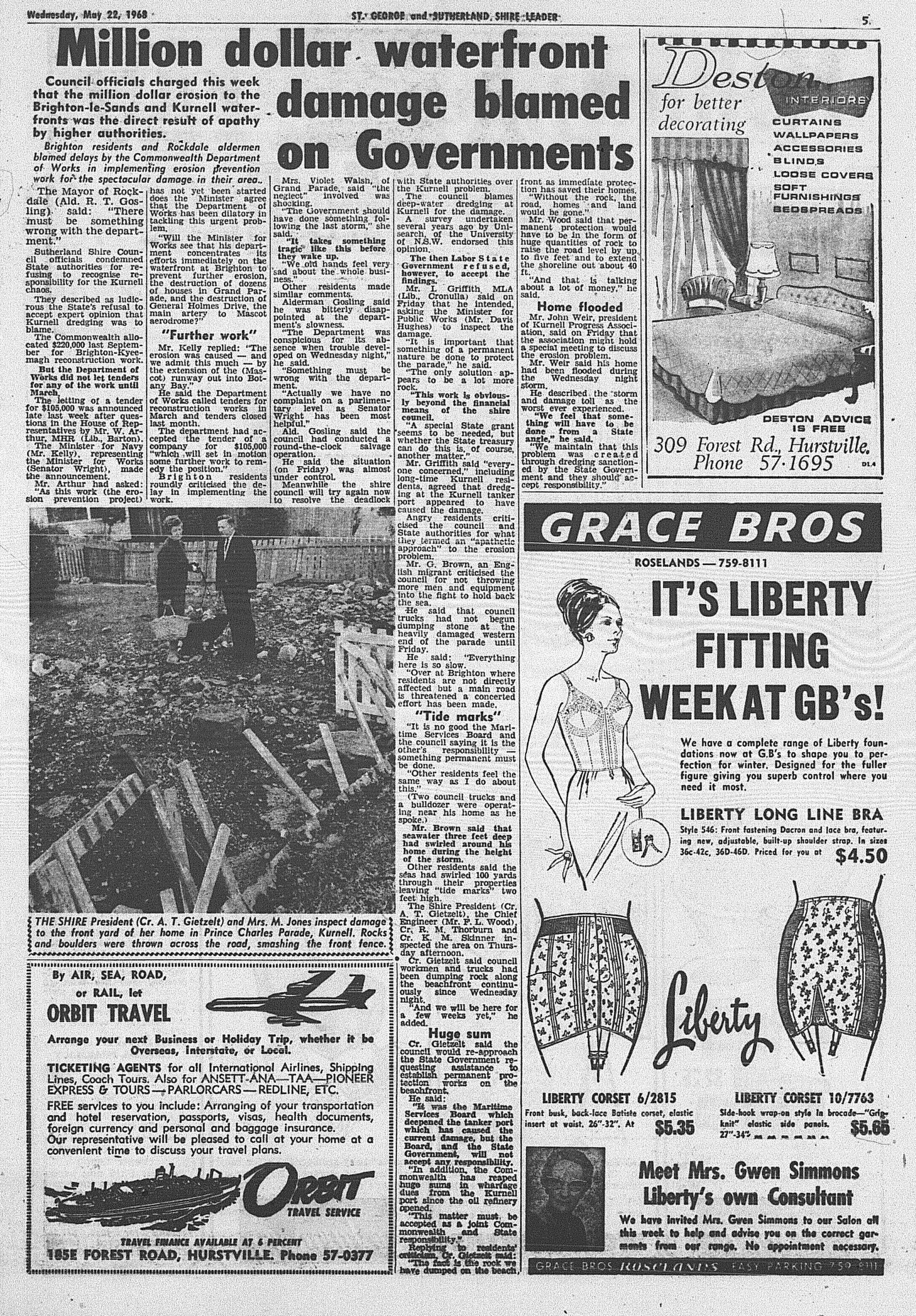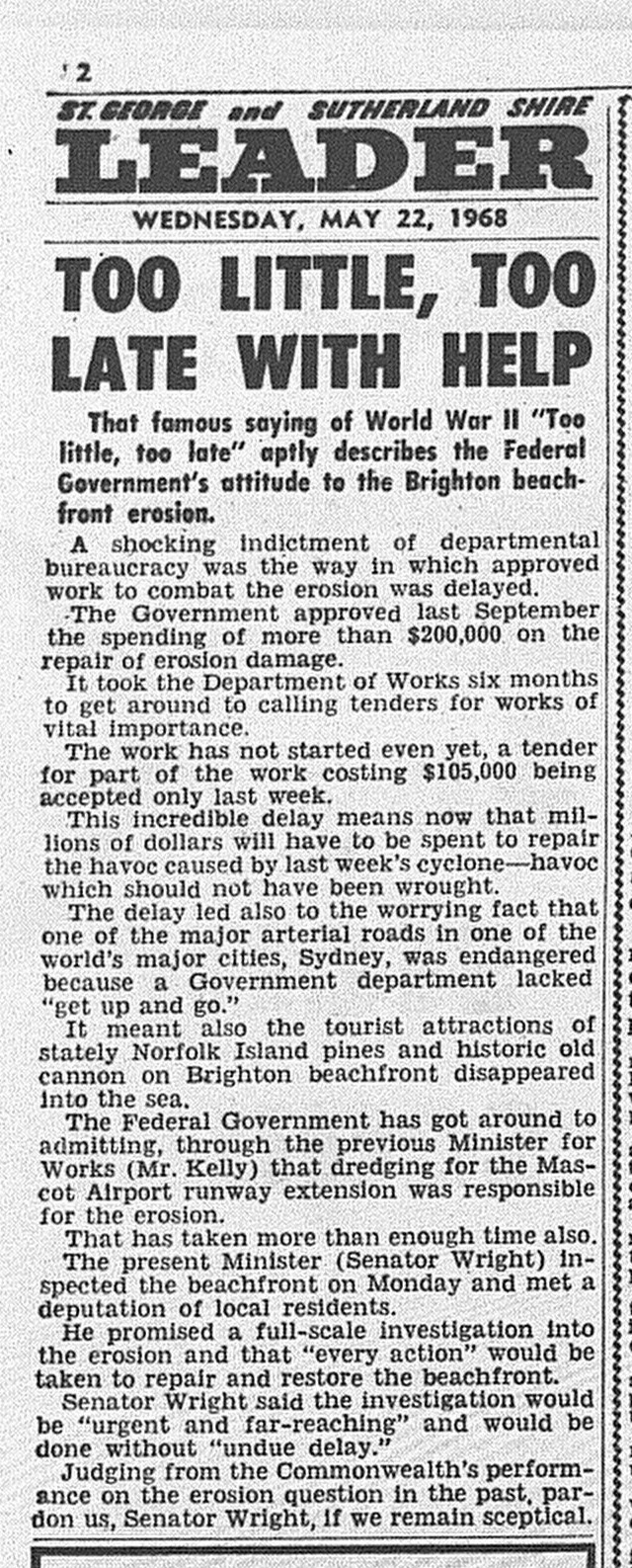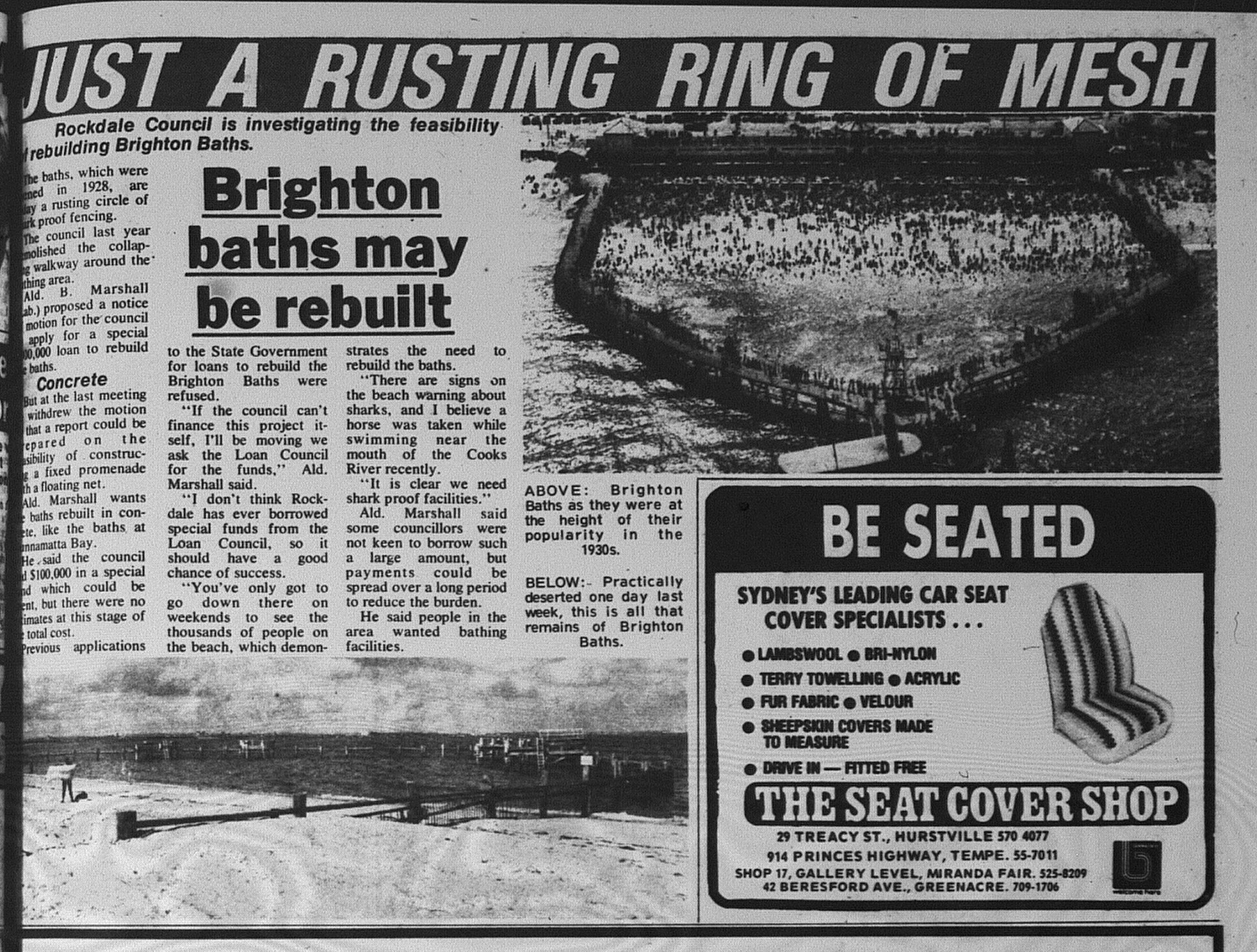While the article was based on the content available within the archives of the newspaper, I felt that it didn't provide an explanation as to why or how its fate was determined.
The argument presented was that one storm in May 1968 all but sealed its fate, along with rising maintenance costs and declining patronage (access was via paid entry). The storm was reported to be one of the worst ever to impact on Botany Bay. The storm swells generated massive erosion of the beachfront at Brighton-Le-Sands, including the collapse of a number of Norfolk pine trees and a historic cannon. Homes were flooded at Kurnell, when waves crashed over Prince Charles Drive. Scans from the May 22, 1968, edition of The St George and Sutherland Shire Leader are included below including the editorial from page 2.
I wanted to also consider other sources as well. I consulted the local history collection of the former Rockdale City Council but also some of the scanned material that I have managed to obtain through my ongoing scans.
A search of the image collection through Bayside Council revealed images of significant storm damage to the baths as early as 1962. I found one image that had a concrete staircase overhanging from 1965. In addition, the beachfront at Brighton had been damaged in a number of storms in the lead up to 1968. The walkway on the perimeter of the baths had buckled during storms, forcing the baths to close
I found an article by former Rockdale Mayor and Alderman Ron Rathbone (date unknown) in a vertical file. Rathbone mentioned that council had prior to the 1960s faced difficulties in managing the baths. Patronage had declined as swimmers flocked to free enclosures located in nearby suburbs. Costs of maintenance had increased.
In 1970 the council struck an agreement with the Maritime Services Board and the Department of Lands and Planning to demolish the baths and replace it with a pier and floating net.The Seymour Pavillon was also to be demolished.
The former dressing sheds were converted into the Le Sands restaurant, opening in 1972. In 2017, the restaurant celebrates 45 years of trade.
A report in 1978, identified major structural concerns and it was recommended that the baths be demolished immediately. The following year, demolition took place.
Source: Anon. 1979. "Just a Rusting Ring of Mesh: Brighton baths may be rebuilt". The St George and Sutherland Shire Leader, February 14: 19.
In mid 1980, the tender to construct the new floating net and pier was awarded by Rockdale Council. By the end of 1980, the new baths were completed at an estimated cost of $160 000. It was in fact bigger than the one that it had replaced. In the 2000's the council demolished the pier.












